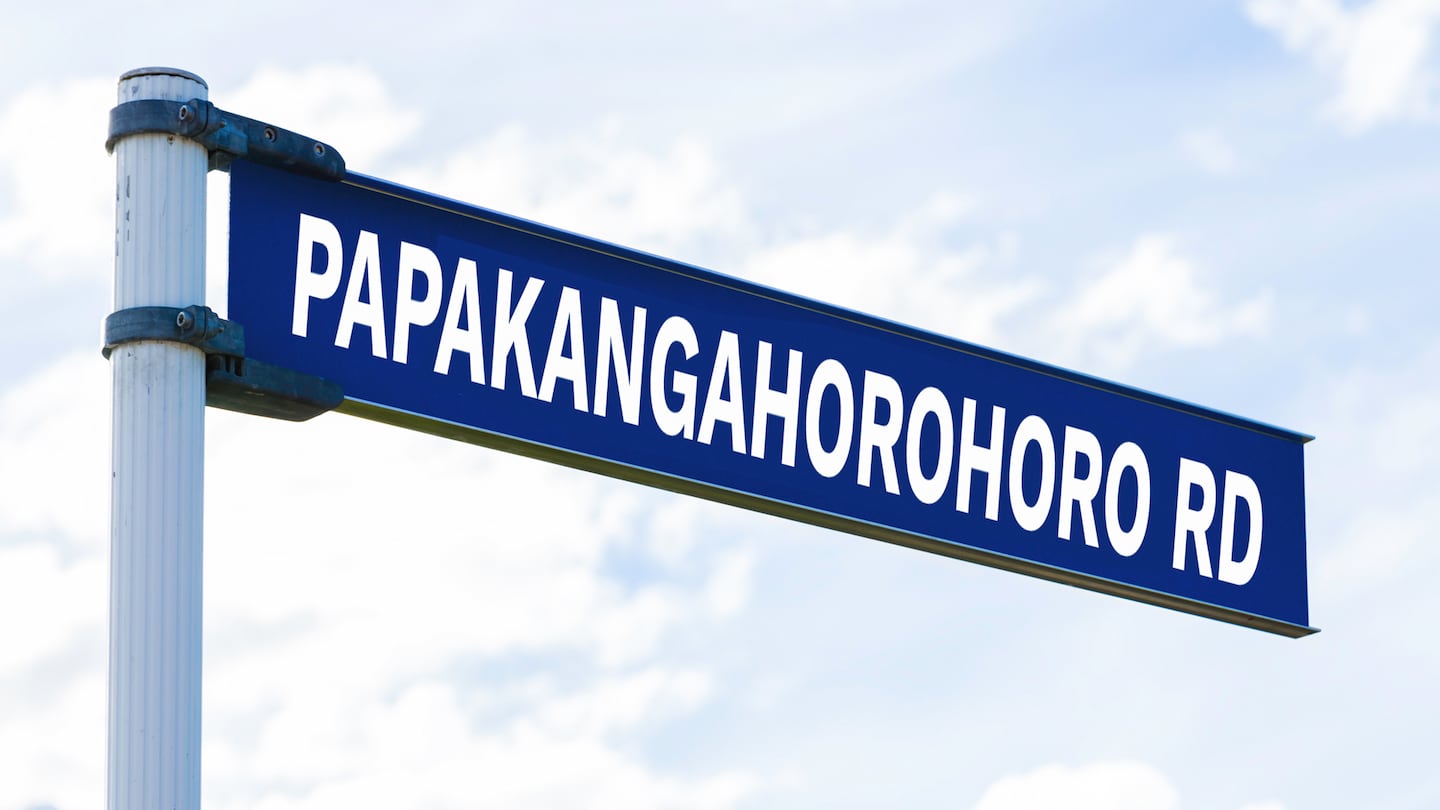If Bono still wants to run where the streets have no name, he could try New Zealand, where a Bay of Plenty street has been seeking a name for five years, with residents’ objecting strongly to a 17-letter reo Māori option which they say is too long and no-one wants.
The developers of the new road and houses off Bunyan Rd, Whakatāne, proposed the name Acacia Avenue to Whakatāne District Council five years ago.
After the council consulted with local iwi, a different name, Papakangahorohoro Rd was proposed.
The name – meaning “to move swiftly in battle formation like the crab” – was chosen by Ngāti Awa cultural adviser Pouroto Ngaropō because the houses were on land where chief Taiwhakaea trained his warriors in defence tactics and battle formations.
“Papakangahorohoro” is the traditional Māori name for the area and it was appropriate as the iwi’s ancestral chief held the mana over the land, Ngaropō said.
As 2023 drew to a close, the parties are no nearer an agreement, they told Stuff.
Residents, represented by Dianne Hawkes who developed the subdivision with husband Darrin, told council in a meeting earlier in the year that the the proposed name was “impractical, being too long and difficult to communicate” to the likes of emergency services or having to relay the address.
Acacia Avenue remains their preferred name.
Darrin Hawkes is frustrated that there is still no resolution as another year ends, and can see it “going on for months”.
His understanding of the road naming process has always been that the developer suggests a name to council, and the process should be “fairly easy”, he said.
“Instead we have had long delays with no one wanting to make a decision. I could understand if there was a large body of people who wanted the 17-letter name, but as far as we can tell, there doesn’t seem to be.
“We have never been contacted by or spoken to by Ngaropō about the issue. We have tried to engage with local hapū, and explained as we are not Māori, we were not sure who to talk to. Our discussions with them have gone well but their priority is improving community relations in the area – it was the first they had heard of the 17-letter name, and it didn’t seem of concern to them what it was called.”
Hawkes said their preferred name was still Acacia Ave and that over the years, it was frustrating that new residents had simply had to be called A, B, C, D and so on.
The developers and residents presented a letter to council saying they “strongly object” to the proposed name and didn’t want a decision “against our wishes”.
Ngaropō was similarly in the dark.
“Nothing is happening at the moment as advised to me by the mayor. So not sure where it’s sitting at the moment.”
The name was important to reflect ancestral links to the past, present and the future, Ngaropō said.
In response to Stuff’s request for an update on the decision process, Whakatāne District Council general manager infrastructure Bevan Gray, gave a written statement: “With regard to the housing development at Bunyan Road, Whakatāne, and its subsequent naming proposal, a resolution has not been made by Whakatāne District Council as a paper is yet to be taken back to council for approval. We understand that the developer and hapū are in conversation.”
Whakatāne mayor Victor Luca did not respond to request for comment.
Under the council’s Road Naming and Property Addressing Policy, the subdivision developer has the responsibility to suggest appropriate names for roads but consultation with relevant iwi is required.
Long names are not unusual in Aotearoa which has one of the longest place names in the world, Taumatawhakatangihangakōauauotamateaturipūkakapikimaungahoronukupōkaiwhenuakitanatahu, in Hawke’s Bay.
- Stuff


